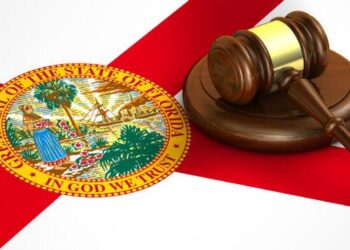I recently spoke to two agency principals, who had signed letters of intent to sell their agencies. The encounters reminded me of a famous line from Charles Dickens’ timeless novel “A Tale of Two Cities.”
Dickens wrote, “It was the best of times, it was the worst of times.” Here, I had met one agency owner, who was very excited about the future his nest egg would provide and another who was a bit bewildered and worried about his future.
The first agent was selling his agency for a revenue multiple of three, while the second was to receive slightly more than one times commission. Both agencies were in the same city and had a similar mix of personal and commercial lines on their books. Both demonstrated similar premium volume.
If they were so similar why the difference in value? Even more importantly, how can you operate your agency so that if you ever decide to sell, you will be in a position similar to the first owner referenced, rather than the second?
The reason for the disparity mentioned above is simple: One owner ran his agency like a business and the other ran the agency like a job that supported his lifestyle. Let’s look at a few key differences and how you can maximize your own agency’s potential.
Owner number one recognized the most important value creator for a buyer is cash flow. He understood top-line revenue, while important, isn’t what drives value (or income for that matter), it’s bottom line. He operated his business to generate cash flow. He took his compensation as distribution, not salary or commission. He benchmarked every item of expense in the agency and made sure he didn’t overspend on payroll or any other expense. His bottom-line profitability was more than 30%. He understood that whether buyers used a multiple of EBITDA (Earnings Before Interest Taxes Depreciation and Amortization) or a discounted cash flow analysis (a forecast of the net present value of future cash flows) to value his agency, the bigger the bottom line, the higher the agency’s value to a potential buyer. He understood that how he got paid over the years mattered less than how much he got paid in the end.
The owner with the big payoff also had an impressive client and policy retention rate of more than 90% compared to the second owner’s 80%. In fact, this owner paid very close attention to retention — prioritizing it even over new business in comparison to the second owner.
The second owner seemed to have an obsession with selling new accounts despite his high turnover. The high-value agency had an average of four policies per client, while the low-value agency only sold 1.5 policies per client. This focus on high retention pours additional money into the bottom line, which improves cash flow, income stability and value.
Despite the fact that the low-value agency owner prioritized new business, his growth rate over the three years before selling was erratic. This was a pattern for him for years. He had a tendency to focus on new business when his carriers were particularly competitive or his personal need for income increased. In contrast, the high-value owner focused on consistent growth by building a value proposition based on specialized expertise and service in niche markets. While the erratic-growth agency experienced a few years of seemingly impressive progress, the high-value agency actually grew more overall in the five years before sale.
The last significant difference I recognized between these two agencies related to the people they employed. Despite similar revenues, the low-value agency had many more customers and consequently more employees. But another striking difference was this agency also employed mostly older workers. In contrast, the high-value agency had fewer employees, a higher revenue-per-employee metric and a distribution of age and experience in the agency. This translated to not only higher profits, but a safer investment for the buyer as there was no risk of a sudden loss of talent due to retirement.
To summarize, the owner, who is now enjoying a better retirement, also enjoyed a higher income overall in the years before selling, than did the other owner.
He accomplished both things because he ran his agency as a business in a very disciplined manner. He understood maximizing revenue per customer made them stickier and more profitable. He grew revenue over time by focusing first on retention and then on new business. He sought new business based on clients he could consistently win rather than on transitory rate cuts. He benchmarked every item of expense to ensure he did not waste money but did drive profitability. And he built a balanced team to ensure that the agency’s progress would continue to be predictable and risk-averse.
These disciplined business management practices yielded significant income for many years as well as a huge payoff at retirement for one owner. These two agents each had an opportunity to choose their path. The results of their choices are clear. Every agency owner has the same choices. Which will you make?
Tony Caldwell is an author, speaker and mentor who has helped independent agents create over 250 independent insurance agencies. Learn more by visiting www.tonycaldwell.net or contacting him at [email protected].
Opinions expressed here are the author’s own.









